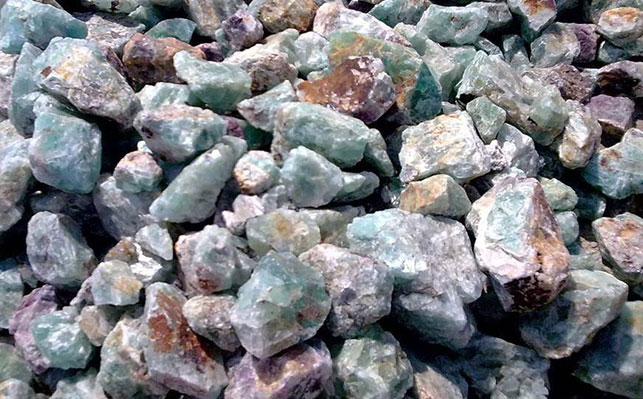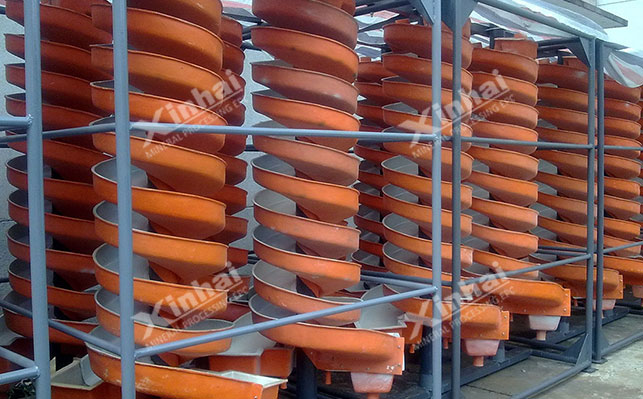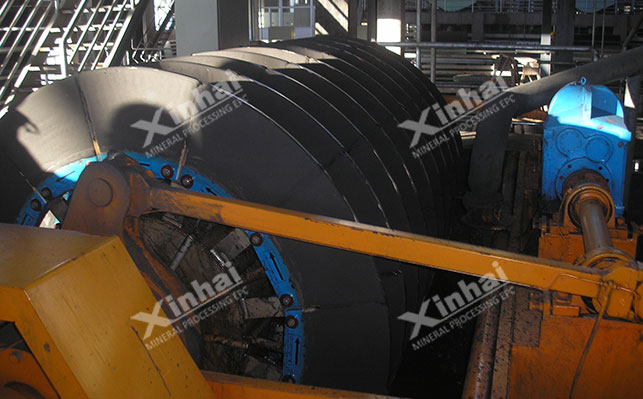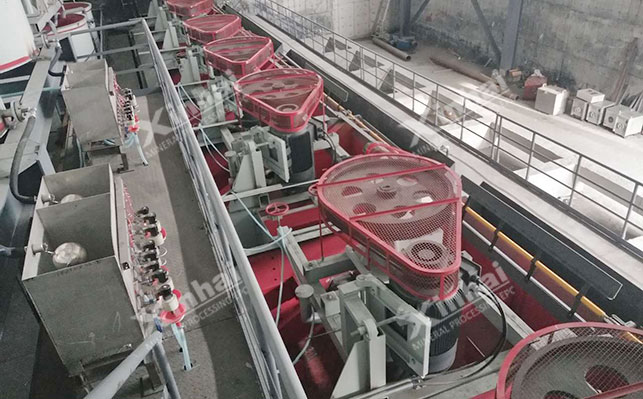
15311826613
Click to add WeChatTantalum and niobium have similar properties. Both are rare metals with high melting points and high boiling points. They are used in electronics, steel, chemicals, metallurgy, atomic energy, aerospace, superconducting technology, modern strategic weapons, medical equipment and other fields. The density of general tantalum-niobium minerals is above 4.5t/m3, while the density of gangue minerals (feldspar, quartz, mica, etc.) in the minerals is between 2 and 3t/m3. There is a density difference between the two. Usually, the gravity separation method can be used to obtain better enrichment.

However, for tantalum-niobium ores with finer embedded particle size, and similar density between comprehensive recovery minerals and gangue minerals, or similar density between tantalum-niobium minerals and comprehensive recovery minerals, it is difficult to achieve effective separation by single gravity separation, and it is necessary to complete the separation by combined ore dressing method.
When the density of tantalum-niobium ore is relatively large, the embedded particle size is relatively coarse, and the density of other useful minerals and gangue minerals is relatively small, part of the tantalum-niobium coarse concentrate can be obtained by gravity separation first, and then the gravity separation tailings can be re-grinded, and then the gravity separation or gravity separation-magnetic separation combined process can be used for scavenging to obtain another part of qualified tantalum-niobium concentrate.

For example, in a tantalum-niobium ore, the main useful minerals are manganese-rich niobium-tantalite, fine crystals, tantalum-containing cassiterite, followed by lithium mica; the gangue is mainly quartz and feldspar, and the others contain a small amount of magnetite and garnet. For this ore, the final separation was completed through several processes including ore washing and crushing, ore grinding and gravity separation, primary fine mud, secondary fine mud, lithium mica flotation, and feldspar gravity recovery. The process is as follows:
After washing and crushing, the raw ore enters the first grinding stage, and the grinding products are subjected to spiral chuteroughing and shaking table to obtain coarse-grained tantalum-niobium concentrate; the first-stage gravity separation tailings are classified by spiral classifier, and the returned sand enters the second-stage open-circuit grinding stage, and the grinding products are subjected to weak magnetic separation and iron removal, and then enter the spiral chute for roughing and shaking table to obtain fine-grained tantalum-niobium concentrate; primary mud (0.2-0 mm) is separated by a rotating spiral chute and a shaking table to select tantalum-niobium minerals; secondary mud is recovered by a spreading chute.
When the density of tantalum-niobium minerals and one or several other useful minerals in the ore is relatively large, the gravity separation-magnetic separation-electrostatic separation (or smelting) method can be used to complete the separation. Generally, gravity separation is used to discard a large amount of waste rock, and then tantalum-niobium is enriched based on the density, specific magnetic susceptibility, dielectric property, floatability and hydrometallurgical characteristics of each mineral in the coarse concentrate.

For example, in a certain tin-tantalum-niobium-tungsten polymetallic granite mine, the tin minerals are mainly cassiterite, with a small amount of stannite and colloidal tin; the tantalum-niobium minerals are mainly columbite, manganese-tantalite, niobium iron ore, and fine crystal stone; the tungsten minerals are mainly wolframite; the gangue is mainly quartz and feldspar. Since the density of tin, tantalum-niobium and tungsten minerals is similar, the gravity separation method of trapezoidal jigging-spiral chute-shaking table is used to first obtain the tin-tungsten-tantalum-niobium mixed coarse concentrate. Wolframite and tantalum-niobium ore are both weakly magnetic minerals with similar densities, so a combined selection process combining beneficiation and smelting is adopted, and the process is as follows:
The mixed coarse concentrate is first washed with hydrochloric acid, and then desludified by hydrocyclone, and then iron is removed by weak magnetic separation, and then weakly magnetic and non-magnetic minerals are separated by dry-type strong magnetic separator. Weakly magnetic minerals (tantalum-niobium-tungsten mixed concentrate) are sent to the water smelting plant to separate tungsten and tantalum-niobium, and non-magnetic minerals (cassiterite-sulfide mineral mixed concentrate) are sent to the fire smelting section to refine refined tin after removing sulfide ore by table flotation shaking table, and tin slag is sent to the water smelting plant to separate tungsten and tantalum-niobium.
If the tantalum-niobium mineral contains zircon, after the final mixed concentrate is obtained, the strong magnetic tailings and shaking table middlings are used to select zircon by electrostatic separation.
When the tantalum-niobium ore has a fine particle size and contains a large amount of other high-density minerals, gravity separation has a certain enrichment effect, but for tantalum-niobium ore with a particle size less than 37μm, it is necessary to use highly selective collectors and inhibitors to assist in separation, so gravity separation-magnetic separation-flotation combined process is often used.

For example, in a tantalum-niobium-tin ore, the original tantalum-niobium ore has a high grade, containing 0.03% tantalum oxide, and is accompanied by tin minerals; the non-metallic minerals mainly include muscovite, sericite, albite, potassium feldspar, etc., but the density of tin in the ore is very similar to that of tantalum-niobium ore, and the embedded particle size is fine. Therefore, a mixed concentrate mainly composed of tantalum-niobium and cassiterite can be obtained by gravity separation, and a spiral concentrator and a spiral chute are used to complete gravity separation. The obtained mixed concentrate is then separated by a weak magnetic separator to remove strong magnetic iron minerals, and the strong magnetic tailings are recovered by shaking table-flotation to recover tin minerals.
The above are several feasible tantalum-niobium ore dressing process methods. Although my country's tantalum-niobium resources are rich, the content is low and the symbiotic relationship is complex. It often coexists with a variety of metal minerals. When dressing, the appropriate process should be selected according to the properties of the ore. Therefore, the editor recommends that a dressing test analysis be conducted first, and a suitable tantalum-niobium ore dressing process method be designed according to the actual situation.